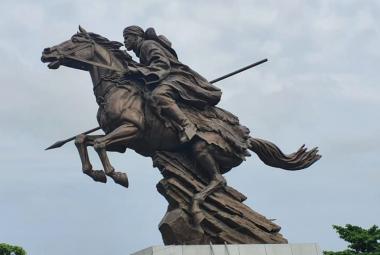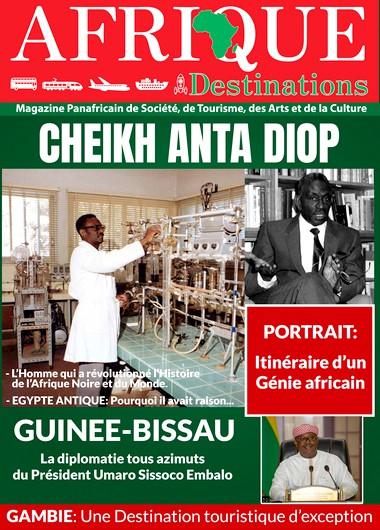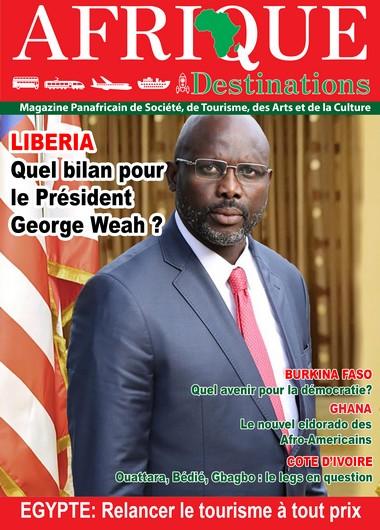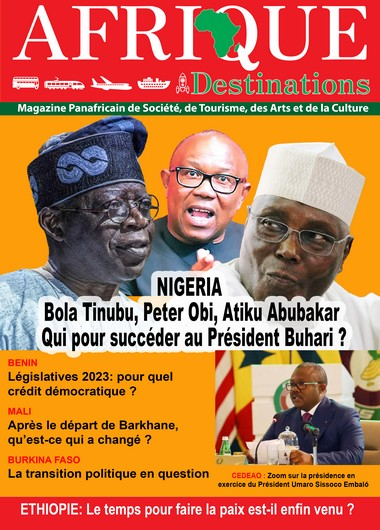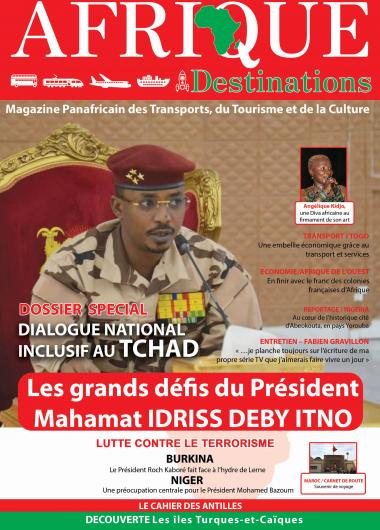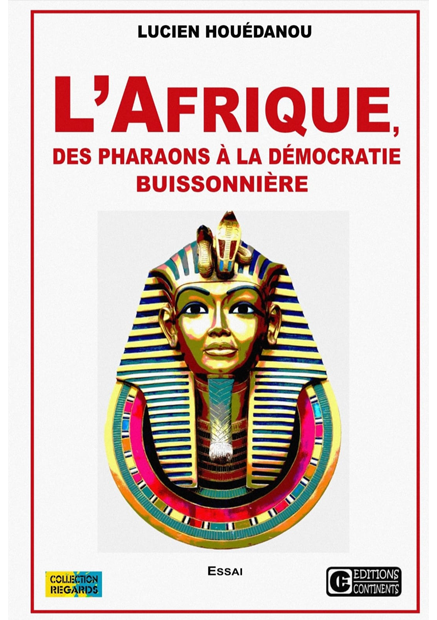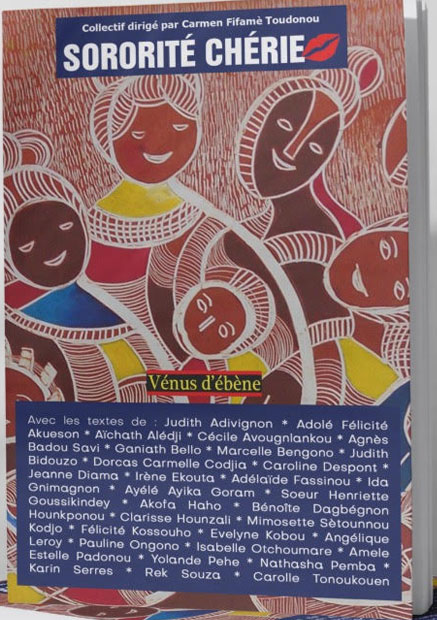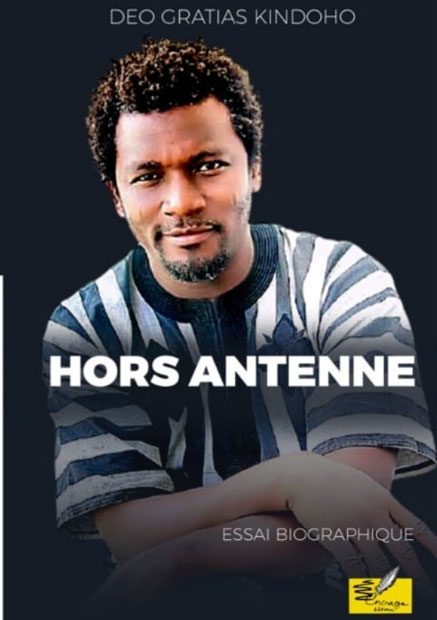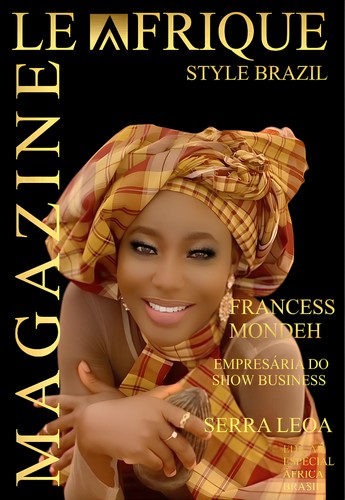Africa still has pharaonic work to do on its most distant past. There is no shortage of tools to understand entire sections of it. But one still needs to be able to decipher and interpret them. In this, the Cameroonian Jesuit Priest Engelbert Mveng, author of several works on theology, anthropology, art and history; was indeed right to write in African Art and Crafts (L’Art et l’artisanat africains), published by Editions Clé in 1980 in Yaoundé, Cameroon: “Negro-African history is written in works of art. The deciphering of this story opens a page of singular and unprecedented epigraphy. It is no longer true to say that Black African history lacks written documents, what is true is that we are often illiterate in the face of its writing.”
ABOUT THE ORIGIN OF THE NAME “DJENNE”
In the article entitled “Banco winning in Djenné” written by Philippe MASSON and published on 04/12/2009*1, he writes:
“And Djenné converted to Islam:
the legend of the golden nugget: In 1280, King Koi Komboro, faced with the rise of Islam, decided to put the imam of Djenné to the test. The deal was simple: if the imam showed him that his faith was the strongest, Islam would become the state religion. Otherwise, all Muslims would be exterminated.
Koi Komboro therefore gave the imam his largest gold nugget and entrusted him with its safekeeping. The king had one of his servants steal the nugget during the night and threw it himself into the Bani, a tributary of the Niger River.
The imam, summoned the next day, admitted that he no longer possessed the gold but affirmed that Komboro would soon find it.
Two days later, the king's wife went to the Djenné market to restock her condiments. She noticed a superb fish on a Bozo woman's stall. She bought the “captain”, a tasty fish from the depths of the Bani. While preparing it for cooking, she found the nugget which she gave to her husband.
Koi Komboro converted to Islam and donated his palace which was razed. The faithful erected the famous banco mosque on the site”.
THAT IS FOR THE LEGEND!
According to WIKIPEDIA, the name means “water genius” in the Bozo language.
The BOZO are a fishing people who live mainly in Mali and are known for their perfect mastery of the Niger River and its tributary the Bani. Many researchers believe that the BOZO are at the origin of the creation of several localities along the River.
WHY THIS EXPLANATION IS ACCURATE
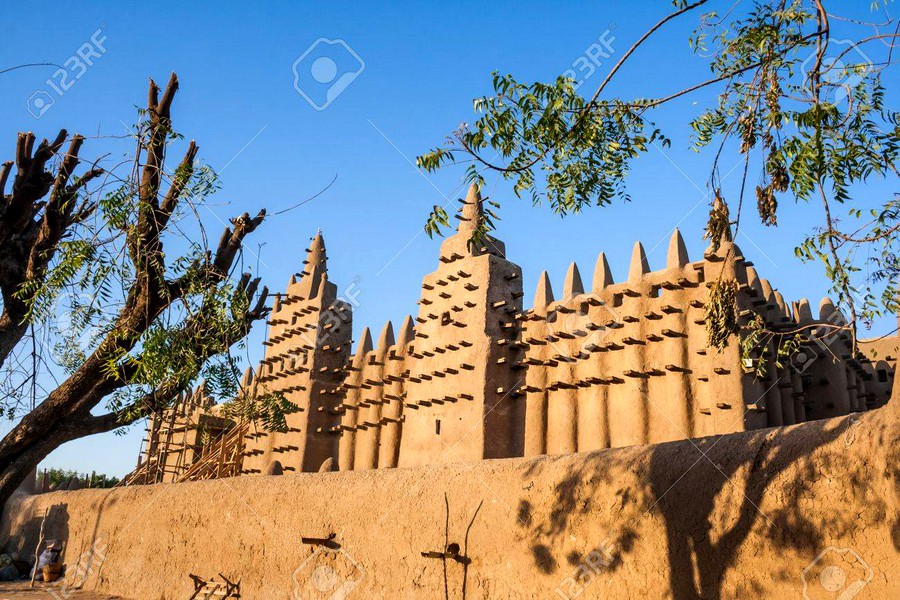
The name “Djenné” given to the city of Mali which is known as one of the oldest cities in Africa, with its GREAT MOSQUE considered to be the largest clay building in the world ever built in the name of ISLAM. It has been included on the UNESCO World Heritage List since 1988 under the name “Ancient towns of Djenné”. Djenné, is known and famous throughout the world for being “the City of 313 Saints”. But it was also the capital of both the Mali Empire and the Songhai Empire.
The name “Djenné” did not fall from the sky. It is a “PAIAN” name par excellence. It originates in the ANCIENT CONCEPT of DJEN. It is a concept which is the strict prerogative of the NIGER-CONGO LANGUAGES FAMILY or NIGER-CONGOLESE LANGUAGES which indeed preceded the birth of PHARAONIC EGYPT.
DJEN = LUO. It's just the same.
The Agrarian Priest-Kings had as their FIRST DIVINE, the DIVINITY OF WATER.
DJEN = LUO designates both the DIVINITY as well as the PRIEST who is responsible for the SACRIFICES. And, I will never stop repeating it enough: it is the LUOS who migrated from ANCIENT NUBIA to found the COLONY of ANCIENT EGYPT. Indeed the DIVINITY of ANCIENT NUBIA is called DJEN.
As I have already written in my book “Heritage The legacy of black Africa to ancient Greece and Rome”, Editions Complicités, (Essai), Paris, 2019, talking about the origin of the word DJINN in French, it was borrowed from ANCIENT NUBIA:
“It is the same when one speaks of the word “Genius” and “Djinn” one makes the first a Greek word which comes from “Generate” and the second an Arabic word. And one hastens to mention that one should not see any connection between these two words, contrary to what their meanings would suggest. Larousse says this: “Genius male name (Latin Genius, tutelary divinity, then talent) In fantastic tales, supernatural being endowed with magical powers. Allegorical personification of an abstract idea; representation of this allegory. Natural ability of someone's mind which makes them capable of conceiving, creating things, concepts of exceptional quality: The genius of Einstein. Person gifted with this ability; talent: a little-known genius. Set of natural characteristics which are essential to a people, a language, a civilization, etc., and give them their originality. In Rome, divinized consciousness of each man. (The Genius of the father of the family was honored on the family altar.) »
As for Djinn, the CNRTL explains to us that “Rem” The word could have been popularized by the famous poem by V. Hugo, entitled Les djinns - Les Orientales, XXVIII. Pronounced. and Orth. : [dʒin]. Ds Ac. 1878 and 1932. Etymol. and Hist. 1666 dgin (J. DE THÉVENOT, Suite du Voyage de Levant, Paris 1674, p. 263 ds Fr. mod. t. 21, p. 293); 1829 djinn (HUGO, Les Orientales, p. 84). Empr. to ar.ǧinn “demon, good or bad” (FEW t. 19, p. 57b). Freq. abs. lit. :32*2 »
“DJEN” IS AT THE BEGINNING OF EVERYTHING…
“DJEN” is a CONCEPT that is both ESOTERIC and RELIGIOUS. It is fundamental in the culture of the Ancient peoples of the NILE VALLEY. The BIBLICAL expression according to which IN THE BEGINNING WAS THE WORD is also borrowed from EGYPTO-NUBIAN THEOLOGY.
There is a panoply of words and names composed with the root of DJEN that one will not find anywhere else than in NEGRO-AFRICAN LANGUAGES. And yet they continue to LIE like toothache about the NEGRO-AFRICAN ORIGINS of the Civilization of ANCIENT EGYPT. Djer (Sekhty), Djeser (Djoser), Djet (Ouadji), Djedefrê (Radjedef), Djehouty (General), Djehoutymes (Thoutmôsis III), Djedkarê Isesi, Djedkarê II Shemaï (Djedkarê II Shemu), Djeserkheperourê (Horemheb) are some some of these names.
DJEN is intrinsically linked to the WORD as it is said in the BIBLE through the WORD. Because the LANGUAGE as an organ itself is said in the Nateni language: DJENFA or DJEN-NOUNFA. Which word depending on the intonation could also mean: GOURD.
The GOURD, in the COSMOGONY of the NILE VALLEY, is one of the most important elements in the SYMBOLIC and the SACRED.
DJEN is intrinsically linked to CREATION as it is said in the BIBLE through the very act of GIVING BIRTH, in every sense of the word. But starting with the ICONOGRAPHY. So DRAW is said in the Nateni language: DJENA.
DJEN can mean ONE in the NUMERATION of NATEMBA.
DJENDA, depending on the intonation (NATENI is a tone language) can mean WATCH, SEE or LAST. But also REPORT, WHISPER, etc.
I could multiply examples of words formed from the root DJEN to demonstrate to all those who continue to cling desperately to hackneyed and baseless theories about the origins of the ANCIENT EGYPTIANS that they were indeed BLACKS OF AFRICA.
Even if the NATEMBA are not isolated GEOGRAPHICALLY speaking in the NORTH-WEST OF BENIN REPUBLIC, NATENI (the language of the NATEMBA), is one of the survivals of the PALEOLITHIC which has been best preserved from a LINGUISTIC point of view among the NIGER-CONGO LANGUAGES or NIGER-CONGOLESE LANGUAGES.
THE CONCEPT OF “DJEN”: FROM ANCIENT EGYPT TO THE PRESENT DAYS

DJEN: Djen is an ancient deity from the Predynastic who ended up being literally eclipsed during the Pharaonic Period and relegated almost to the last rank. When we know the history and language of the Natemba, it is easy to realize that Djen is the reference God of their Ancestors if we except Ra or Rê, that is to say the Sun. Added to many other archaeological synchronisms and textual synchronisms, we can affirm that, without doubt, the Ancestors of the current Natemba had already left the Nile Valley well before the Proto-Dynastic Period, or even the Pre-Dynastic Period. So much so that even during the Pharaonic Period, the ancient Egyptians made the phoneme D or Dj in their hieroglyphs the conventional symbol to designate the Serpent. Now all the Great Initiates know that in Black Africa and, in the Nile Valley in particular, the Serpent (in this case the Cobra) is the first symbol with which Theology and the Clergy are associated. And the King also consequently as the putative Representative of God on Earth and High Priest.
The Gurmantché call the Royal Palace Nunbado Diegu which can still be written in French as Nounbado Diegou. The modern Natemba would find a similar language phonetically but would have much more difficulty deciphering the developments or alterities which have made the difference with its current language if it does not know its history. Which could not be the case for the Elders or the initiates. To decipher this name, it must be broken down into:
- Nun or Noun: Original name of the people from whom the Gurmantché and the Mosse in particular descend, that is to say the Proto-Moose or Wasangari or Nouma or Nanumba or Somba, etc.
- Bado: Chief or King or Bearer of sacred attributes
- Diegu or Diegu: Residence or Habitation or Palace for the King.
Among the Natemba, Bado became Balo and Diegou transformed into Dieri. This requires recourse to both linguistics and history to detect it. In modern language, Natemba says Na-Dieri to indicate a residence or a dwelling. But Dieri has almost fallen into disuse in favor of another synonym, namely Amon which gives Na-Amon which means both symbolically and theologically the same thing as Dieri. Nalerigu which could also have been written Na-Lerigu, the name of the political and spiritual capital of the Dagbamba of Northern Ghana, actually includes a third variant meaning the Great ancestral home which still served as the Royal Palace. In other words, Diegu = Lerigu = Diéri, it’s the same thing. Because if we push the comparison further, there is only one step to go back to the language of the Predynastic period in the Nile Valley. Diegu just like Dieri being the home of the god Djen, very important in the Predynastic era and who, obscured in the Pharaonic era (deity of the 21st porch in what Egyptologists call the Book of the Dead), gave way to Amon, a divinity made more famous by priests and pharaohs. The names Djer (Sekhty), Djeser (Djoser), Djet (Ouadji), Djedefrê (Radjedef), Djehouty (General), Djehoutymes (Thoutmôsis III), Djedkarê Isesi, Djedkarê II Shemaï (Djedkarê II Shemu), Djeserkheperourê (Horemheb) and others carry within them this root Dje from the name of this ancient and major god in Predynastic Egypt who became a minor god in Pharaonic Egypt. No wonder if Djeser whose Horus name is Netjerikhet is the one who made the Solar Disc or Ra the main god of Ancient Egypt and that the other name of Ouadji is Djet.
This ancient divinity Djen which was ousted by losing its importance at an undoubtedly later period, in accordance with the spirit of rivalries between Egyptian divinities, is most certainly also the one from which the Djed pillar, one of the great symbols of Ancient Egypt. The others being, the Ankh cross, the Ouas scepter with the famous Sethian animal (*3) and the Oudjat eye. In short, what the Ancient Egyptians called Per-Âa, which the Natemba still refer to today as Na-Ankh, has the same ancestral symbolism and meaning as Na-Diegu, Na-Lerigu, Na-Diéri, Na-Ankh, Na-Amon or in other words Nounbado Diegou of the King of Gulmu.
AS A CONCLUSION
I never claimed that CHEIKH ANTA DIOP was above criticism, understanding that anyone who undertakes work cannot be above criticism. Even God is not exempt from criticism, let alone a human being. And CHEIKH ANTA DIOP who is a GENIUS – in the noble sense of the term, it is true to say so – did not have infused knowledge either. Let’s all agree on that.
On the other hand, I stood up, and in a virulent manner, against certain Western researchers who took on CHEIKH ANTA DIOP under the pretext that he had a LINGUISTIC APPROACH to the history of ANCIENT EGYPT. And I underlined their great ignorance in matters of NEGRO-AFRICAN LANGUAGES without excusing their remarks towards him and at the same time towards THEOPHILE OBENGA. Because in truth, and I defy anyone to prove me wrong, if you do not master the LINGUISTIC CONCEPTS of Ancient Black Africa, it would be impossible for you to understand a good part of its ancient History. BECAUSE A GOOD PART OF THIS ANCIENT HISTORY IS ENGRAVED IN ANCIENT LANGUAGES. By studying all these languages in a meticulous and in-depth manner, it appears that it is the CONCEPTS of the NIGER-CONGO LANGUAGES or NIGERO-CONGOLESE LANGUAGES which imposed themselves on HOMO SAPIENS at least 70,000 years ago as FUNDAMENTAL CONCEPTS of the MIGRATION “OUT OF AFRICA”.
Moreover, I said and I persist and sign that if NATENI has as many cognates with INDIAN LANGUAGES even today and in particular the LITURGICAL LANGUAGE of ANCIENT INDIA as the comparative studies of NATENI and INDIAN LANGUAGES that I have done prove it, it appears obviously that those who transported to INDIA and bequeathed this LINGUISTIC SUBSTRATE to the INDIAN LANGUAGES came from the NILE VALLEY and belonged to this large FAMILY of NIGER-CONGO LANGUAGES or NIGER-CONGOLESE LANGUAGES. For this, we would have to go back between 15,000 and 20,000 years before Jesus Christ. CONCLUSION: the ancestors of the DRAVIDIANS came from the same people as the ancestors of the ANCIENT EGYPTIANS. And they were indeed BLACK.
Speaking of the origin of the name of Mount Sinai in another Tribune entitled: Origin of the word “Sinai”: When the history of ancient India sheds light on that of ancient Egypt. And vice versa…*4; I had already touched on the subject.Once again, I challenge anyone to prove me wrong. I ask Indianists and Indians who are passionate about languages and who think I am making things up to contradict me. The debate is open. And if I lie, in principle, I should be afraid of it.
They can close their ears, they have certainly not finished hearing me repeat it loudly and clearly. As my Ancestors used to do during ANCIENT SLAMS, I will continue to challenge all those who say that those who founded ANCIENT EGYPT were not BLACKS OF AFRICA to display their ARGUMENTS and to explain ANCIENT EGYPTIAN to us in a PHILOLOGICAL way. They won't be able to, quite simply because they don't have the keys for it. At the beginning of ANCIENT EGYPT was the CITY OF HAWK and the LUO who could also be called DJEN-NUBA.
I will return soon through a BOOK in preparation to explain how the NIGER-CONGO LANGUAGES FAMILY or NIGER-CONGOLESE LANGUAGES is the one that accompanied HOMO SAPIENS in its MIGRATION across the WORLD.
I have already said that I did not agree with a certain way of classifying the NEGRO-AFRICAN LANGUAGES (NAL) in the classification generally accepted even today. Quite simply, because when one studies these languages closely and the classification in question, one realizes that certain languages are in certain family groups only for GEOGRAPHICAL and not GENETIC reasons. AFRICAN LINGUISTS should therefore resume this work of LINGUISTIC CLASSIFICATION. I'm not, but I tell them anyway! Although I admit that the genetic attribution of languages is still a very delicate and difficult subject.
By Marcus Boni TEIGA
*1 - Philippe MASSON, Banco gagnant à Djenné, d’a : https://www.darchitectures.com/banco-gagnant-djenne-a238.html
(d'a is a free magazine and independent of any institution, Order, construction company or group of architects. It is solely financed by your subscriptions, newsstand sales and the contribution of advertising advertisements.
architecture/SEA innovapresse
15 Avenue de la Grande Armée, 75116 PARIS)
*2 - Source : http://www.larousse.fr/dictionnaires/francais/g%C3%A9nie/36569
*3 - B. Mathieu, « Seth polymorphe : le rival, le vaincu, l’auxiliaire », ENIM 4, 2011, p. 137-158. (*39 - B. Mathieu, “Polymorphic Seth: the rival, the defeated, the auxiliary”, ENIM 4, 2011, p. 137-158.)
*4 - Marcus Boni Teiga, TRIBUNE - Origin of the word "Sinai": When the history of ancient India sheds light on that of ancient Egypt. And vice versa…, Afrique Destinations, 05/02/2023 - 16:53 : https://www.afriquedestinations.com/en/tribune-origin-word-sinai-when-history-ancient-india-sheds-light-ancient-egypt-and-vice-versa







